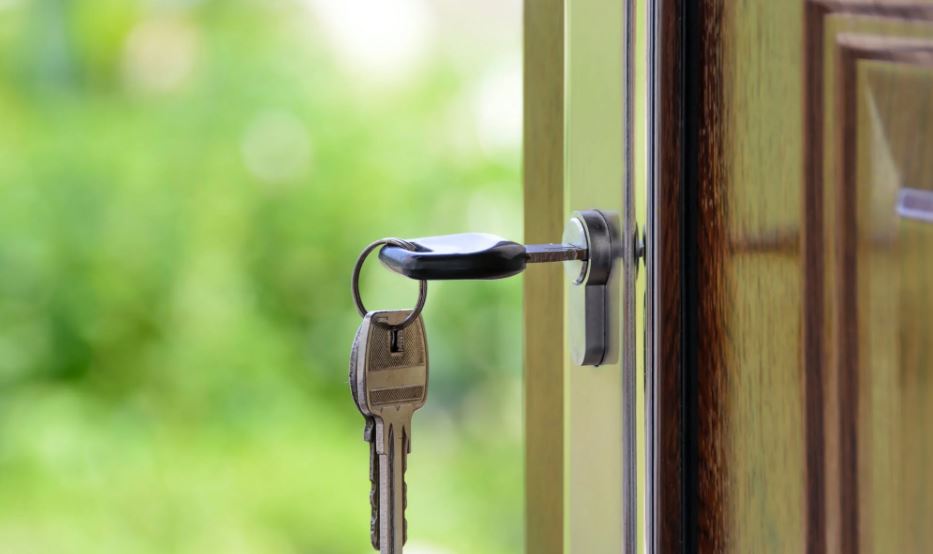The lack of homes in major cities is endemic, but solutions exist—providing countries can muster the political capital.

Original Post Wired Magazine :
ANGHARAD PAGET-JONES, FROM Port Talbot, Wales, doesn’t expect to ever get on the housing ladder. Despite what money-saving advice and guides on the internet say, “it’s not as easy as stopping drinking coffee in the morning or canceling your Netflix subscription,” she says. Paget-Jones, 28, needs a home of her own to live in. As someone with disabilities, she sorely needs to adapt her property to make her quality of life better, but she can’t do that in the rental market.
“Owning my own home is the goal,” she says. But despite working full-time, she hasn’t been able to save enough to get close to putting down a deposit. The average price of homes she’s been looking at is around £180,000 ($235,000). She has around £3,000 ($3,900) in savings, while her rent is £675 a month. She’s able to save around £200 a month, but higher costs of living have hit her hard. “I’m saving a lot more than most people, I understand, but with everything else going up, it’s not possible to save more than that while being able to heat my home and eat,” she says.
Paget-Jones’ situation is far from unique. House prices are 4.4 times the average disposable income in the United States—the highest level since 2006. In England and Wales, it’s 8.9 times, up from 6.7 times a decade ago. Canada is considering prohibiting foreigners from buying homes in the country after the average house price rose to nine times the average household income. The housing market is broken, with more people being left behind in a never-ending cycle of rentals because they can’t afford to get a foot on the housing ladder.
This problem has been compounded by those with the money to invest choosing property over bank accounts after years of low interest rates, leaving the rest to spend their income on rent, rather than saving to buy a home of their own.
“Global interest rates being quite low has been fueling house prices going up around the world,” says Dan Wilson Craw, deputy director of Generation Rent, a UK lobby group campaigning for renters’ rights.
“Housing isn’t housing,” agrees Richard Ronald, professor of housing and chair of political and economic geographies at the University of Amsterdam. “Housing is an investment good. It’s a pension.”
It’s a problem that countries worldwide have recognized, and many are trying to remedy. “There’s a pretty big agreement that the supply and demand equation is very, very unbalanced,” says Remy Raisner, founder of New York real estate investment firm the Raisner Group and coauthor of a World Economic Forum report on the global housing crisis. In the United States, housing production has been short around 3 million homes per decade this century.
Some suggest that Japan is the model to follow. There, rental prices have largely remained flat over the last 25 years, according to data from the country’s statistics bureau. The reason is that the government controls zoning nationally and is more open to development in the number of houses it allows to be built. Just over a third of Japanese citizens rent the homes they live in, protected by a 1991 law called the Act on Land and Building Leases, which makes it difficult for landlords to end leases or prevent a tenant from extending their rental contract.
Combined, that means that Japanese citizens are the third-most satisfied with the availability of good, affordable housing of all OECD countries—more than 10 percentage points higher than the United States, and 20 percentage points higher than Canada.
“One thing that is unique to Japan is the entitlement process, meaning getting a permit for construction is less uncertain in Japan than in other countries,” says Jiro Yoshida, associate professor of business at Penn State’s Smeal College of Business. “Japanese zoning regulations and building code regulations are totally rule-based. Public officials and planning boards don’t have much discretion.” That’s night and day compared to the United States, where local jurisdiction planning teams can bend and adapt the rules to their own whims. “Negotiation in the US is so uncertain and not obvious, that each local area has its own lawyers specializing in the entitlement process,” says Yoshida.
Wilson Craw is supportive of the Japanese system being implemented elsewhere. “I think there’s no reason why we can’t have a Japanese-style housing system,” he says. However, no politician wants to be responsible for reducing the price of property for fear of alienating homeowning voters, which means that embracing it is unlikely. Because new developments in tight-knit communities can be politically unfavorable, politicians have been dissuaded from accelerating the building of new homes.
The White House recently admitted that the pace of house building has not kept pace with population for more than 40 years and that homes that are built are too big and too expensive for first-time buyers. The number of new homes under 1,400 square feet being built in the United States is more than 80 percent lower than the amount built in the 1970s. Land is earmarked for golf courses, popular with older voters more likely to cast ballots, rather than houses.
Yet not everyone thinks that Japan’s housing market is as rosy as it seems. While rental prices have stayed largely flat, the price of buying a property in Japan has increased, just as it has elsewhere. “Japan’s system isn’t better by any means,” argues Ronald, who has been based between Japan and the Netherlands for the last two decades.
“It’s just not overinflated, because there are fewer Japanese people in the world than when we started this phone call, but the same amount of houses.” Japan’s aging population has helped explain its comparative success when viewed from outside the country. “They haven’t done anything magical with housing policies in Japan, and in fact they had a very destructive house price inflation,” says Ronald. “There’s nothing in Japanese housing policy that’s particularly special.” And even the country’s successes would be difficult to mimic elsewhere. “That’s one country that has been—for better or worse—pretty much completely rebuilt since the Second World War,” says Raisner. “It’s going to be hard to replicate this model where obviously there hasn’t been the same amount of history, so to speak.”
So where else should we be looking, if not to Japan, for the model to fix the broken housing market in large parts of the west? One option is Singapore, where public housing is built in specially designed communities and sold to individuals with a 99-year lease below market value. Selling on that property is highly restricted to reduce profiteering, but it can happen after five years of ownership. Nearly four in five Singaporeans live in public-sector housing, according to official statistics. “Prices can never get beyond regular working families,” says Ronald. “They have this virtuous circle, and it makes it interesting to think about the role of regulating housing.”
In Europe, there is another viable alternative playing out in Germany.
“Germany’s model is a little bit too extreme and unique in the sense that they have so much public housing, but living in a rental unit is the norm in Germany,” says Yoshida. The country has the second-lowest proportion of homeowners in the entire OECD. There, buying a home to live in isn’t always the end goal. “In Germany, they live in rental units and buy a house as an investment,” he says.
Tenants’ rights became the focus of a campaign called DW und Co. Enteignen (Expropriate Deutsche Wohnen and Co.), designed to try and take a quarter-million properties out of the hands of private property owners and into public ownership, allowing fairer prices for tenants and a better chance at home ownership.
Property ownership is increasing in Germany alongside house prices as people see owning the roof above their heads as a sense of security post-pandemic—pushing prices higher, but not necessarily affecting the experience of many in the market. “Tenants have long-term, secure tenancies, and they can decorate and invest in their own homes, assuming they’re going to live their lives there, have children, and have them grow up in rental housing,” says Ronald.
Until late January 2022, housing developments in Germany were subsidized by the government below market rates for the first five years after being built. “It means tens of thousands of units every year come onto the market, keeping rental prices lower and preventing scrambles to buy a property,” he says.
A similar model exists in Austria and Switzerland, where the split is roughly 55 to 45 percent (in favor of renting in Switzerland, and owning in Austria), compared to an average European home ownership rate of 70 percent. When you get to the Austrian capital, Vienna, the home ownership rate is just 7 percent.
“What German and Swiss housing policies to some extent do is ensure they provide subsidies to guarantee a reliable flow of low-cost rental housing into the system,” says Ronald.
There are issues with the central European model, but in general, the countries that have made their housing markets work best are those that incentivize cheap rental prices or easy home ownership, while dissuading those who look to invest in properties as solely a revenue-generating source of income. “There’s no reason we [the rest of the world] can’t have that,” says Wilson Craw. “But practically, getting from here to there, we need to think about what barriers the political system presents.”












 Hello, Pacific Rim Chamber of Commerce Members,
Hello, Pacific Rim Chamber of Commerce Members,